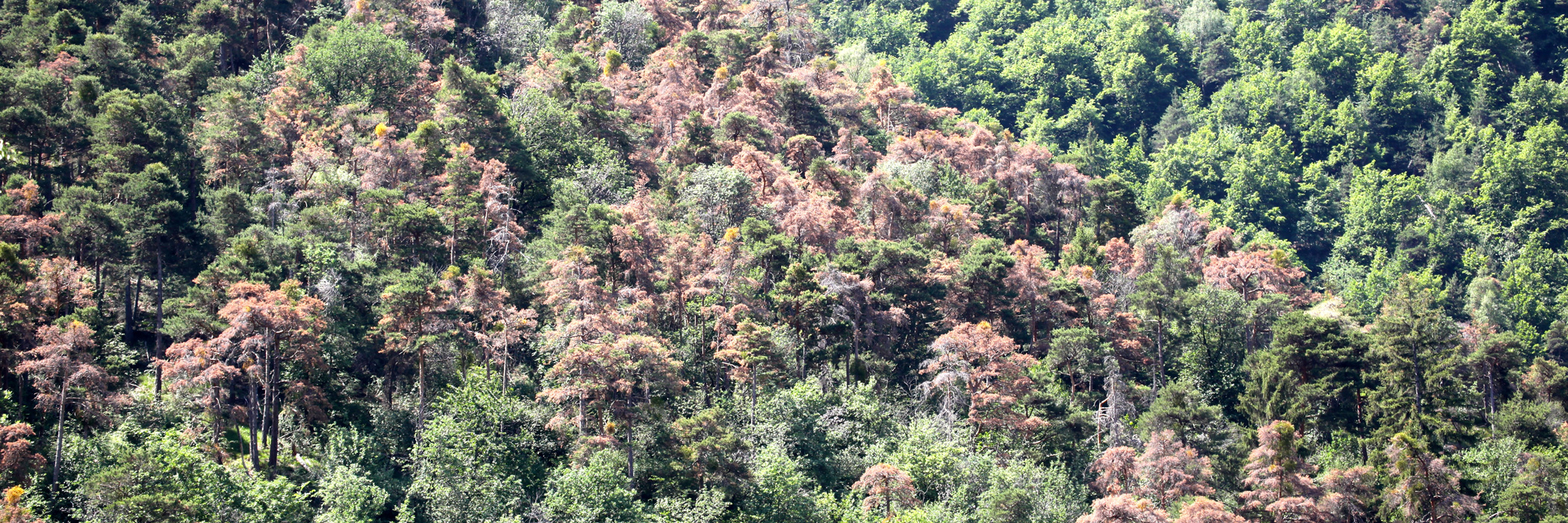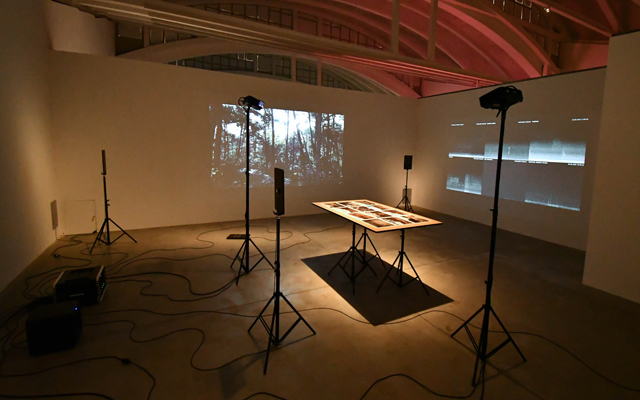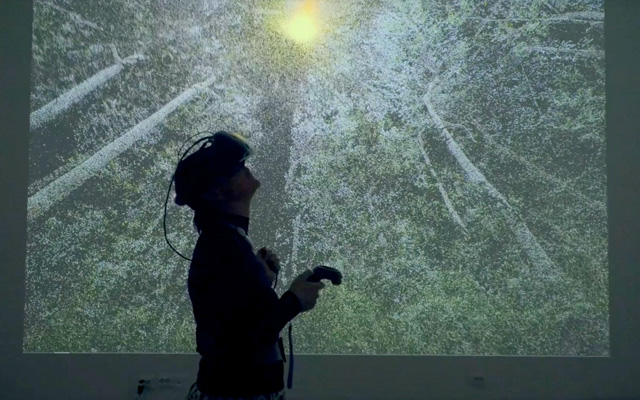Artistic Research
The Role and Significance of New Media, Technologies and Technoscientific Methods in the Arts for the Perception and Awareness of the Ecological.This SNSF-research project investigates sensing techniques in the arts in view of understanding their role for the perception of nonhuman modes of existence. It intends to bring both the question of the technological into the ecological arts and to bridge the gap between them.
„If media can make a difference in investigating the ecological crisis, we need to begin with media technology itself.“
At present, we notice an increased interest in the use of technological means of sensing in “nature mediation”: eco-media apparatuses designed to help humans detect non-human forms of existence which have, up to now, evaded our attention.
On the one hand, it comes with the hope that measuring data can be used to render factual and politicize unknown or disowned environmental phenomena. On the other hand, it seems to generate new forms of relationality and care for the “environment”. In creating and analysing various techno-eco-aesthetic projects, Ecodata–Ecomedia–Ecoaesthetics wants to critically discuss these assumptions. It opens up a discussion about how, for example, data monitoring, visualization, sonification, critical mapping or DIY practices might enhance participation and action, or not.
By bringing together artists, theorists and natural scientists, the project aims to allow participants to learn from each other’s methods, and by doing so, to re-articulate the aesthetic modes of ecological thinking and acting in today’s machinic world of opacity. The theoretical and practice parts are closely intertwined, aiming to challenge the dualism of theory and practice, and so, working towards an aesthetics of theorypractice or practicetheory. In short, this project aims to develop a multifaceted artefactual poetics of the more-than-human, in order to investigate and correct our basic relations to non-human beings and to trigger a new material understanding of that what we called “environment” or “nature”.
The project is use-inspired basic research and composed of two main parts:
Theoretical and curatorial part: Yvonne Volkart
Artistic-practice part: Marcus Maeder, Rasa Smite and Aline Veillat
Artistic-practice part
In the practice part, each of the artists-researchers develops an individual aesthetic approach relative to the alpine forest Pfynwald. They do so in close cooperation with the Swiss Federal Institute for Forest, Snow and Landscape Research who has been monitoring this forest for over than 25 years. The Pfynwald is old; its pines settled as pioneer plants after the last ice age and lasted until the 20th century. Today, the Pfynwald consists of only half of its pine population due to the fluorine emissions of the local aluminium industry as well as increased drought caused by climate change.
It is unclear whether the pine population will be destemmed or replaced by drought-resistant trees such as the downy oak, a species originally native to the milder climate of southern
Europe. The future is unclear. What is clear is that the Pfynwald is a globally unique outdoor lab forecasting possible scenarios in the time of climate change. Questions arise how these data might affect us. What is needed aesthetically so that they might trigger care, solidarity and empathy for the multi-species inhabitants of planet Earth?
All artist-researchers have an interdisciplinary approach. They develop artistic idioms to explore, ‘translate’ or ‘represent’ the forest as an ecosystem composed of many human and
non-human actors, and they use and interpret various media-technologies beyond simple illustration of nature science.
Marcus Maeder has been working with the WSL scientists well before this contribution to the Ecodata-Ecomedia-Ecoasthetics-research. He showed that eco-acoustic observation as well as analysis and sonification of measurement data are promising research methods in the fields of sound art, artistic research, landscape ecology and biodiversity assessments. In the course of her research, Rasa Smite found out that trees are not only transformers of CO2 into oxygen, but also emitters of volatile matter, which affect atmosphere. One of her approaches to this phenomenon is to get her hands “dirty” and to work aesthetically with and through these materials, such as resin. Aline Veillat started with the conceptual deconstruction of “the forest” and the question of “nature” in the Anthropocene. Today, she is elaborating an artistic form that would reflect her conceptual approach: How to translate an entanglement of signs into aesthetic realms? How to detect, recognize and potentially respond to signs?
Theoretical and curatorial part
In the theoretical part, project leader Yvonne Volkart develops an eco-techno-aesthetics of relationality and care. She asserts that moments of relationality are generated not so much
through technologies of detection as by the means of sensory aesthetics. Her argumentation is based on the analysis of the representations and idioms of various artistic projects and exhibition modes, scrutinizing the scientific displays in media arts. It questions their references, values and underlying ideologies, and it asks if they are capable of opening up new relations to those zones of life that, in the past, we have been calling euphorically “the green”. Does aesthetic abundance, aesthetic surplus emerge? And if so, how exactly does this work? Furthermore, her research wants to know if the widespread hope into the investigative function of data and information in the arts and environmental DIY practices can be verified, be it by triggering public discussions or actions. What is it that is at work in the single work? Is it the technological function, its specific adoption, or rather the correlated fantasy and the aesthetic impact, that may provide hope and power?



